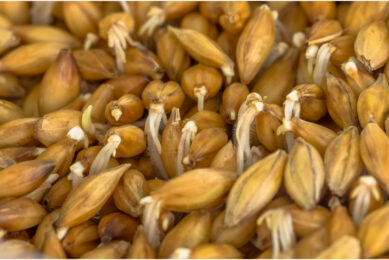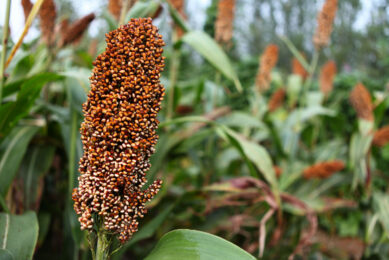Study: Effect of swapping barley for sorghum in lamb diets

Abstract: This study looked at the effects of substituting barley (B) with sorghum (S) on site and extent of in vivo disappearance of dry matter (DM), starch and nitrogen in the gastro-intestinal tract (GIT), microbial protein synthesis and growth in finishing lambs.
By: M Yahaghi, JB Liang, J Balcells, R Valizadeh, AR Seradj, R Alimon, YW Ho
A group of 18 male Iranian Baluchi lambs were allocated to three dietary treatments in a complete randomised design (CRD). Dietary grain treatments were: barley (B) as control, barley: sorghum (BS) (in equal amount) and sorghum (S).
At the end of the feeding trial, the lambs were euthanised and digesta contents in the different sections of the GIT were collected to determine DM, starch and nitrogen disappearance.
Starch intake of lambs on barley (B) diet was lower than those fed S and BS but lambs on B diet had higher (P<0.05) ruminal DM content and starch disappearance resulting in lower (P<0.05) ruminal pH than those fed diets containing sorghum. Although lambs on B diet had higher (P<0.05) volatile fatty acids (VFA) concentration in the rumen, highest ruminal microbial protein synthesis was recorded in lambs fed BS diet, presumably due to the more synchronised release of energy and nitrogen together with the higher rumen pH appropriate for microbial growth. Although a higher (P<0.05) outflow rate (g/d) of starch into the small intestine was observed for high sorghum (S) diet than the BS and control (B) diets, lambs on S diet had the lowest microbial-N flow to small intestine, resulting in the lowest N and starch digestibility in the small intestine and total track.
There was a clear positive relationship between microbial N (MN) synthesis and starch disappearance in the small intestine, with BS lambs producing the highest and S lambs lowest MN yield (32.2 and 24.1g/d, respectively) and corresponding starch disappearance was 0.87 and 0.58, respectively. The majority of the post-ruminal nutrients (DM, N and starch) were hydrolyzed in the distal-duodenum and anterior segments of jejunum. It can be concluded that substitution of barley with 0.50 sorghum increased outflow of starch from the rumen, enhanced starch digestibility and absorption in the small intestine and resulted in higher growth rate as evident by the higher average daily gain (ADG) and more efficient feed conversion ratio (FCR) recorded for lambs on the BS diet.
Full article see Animal Feed Science and Technology











